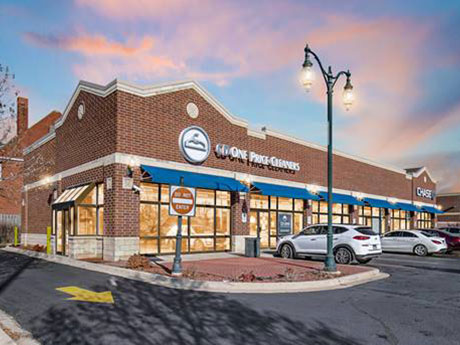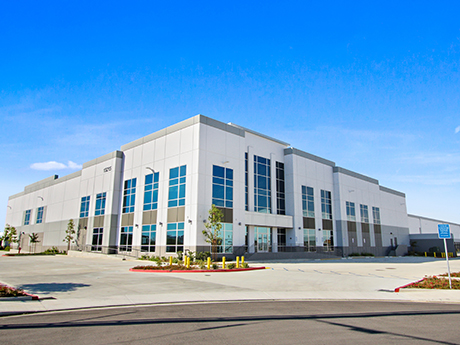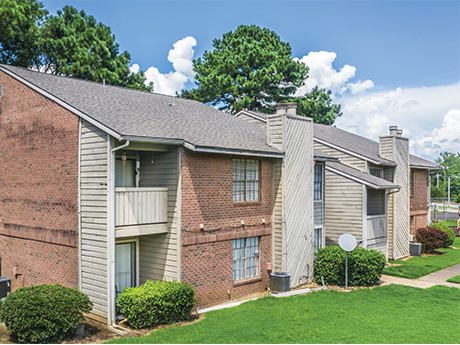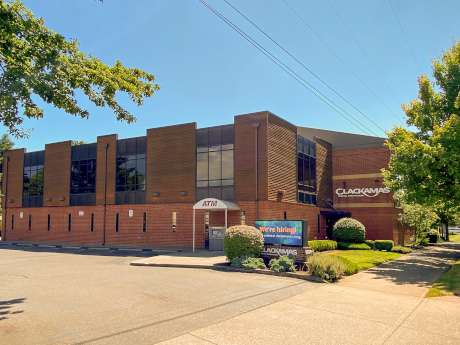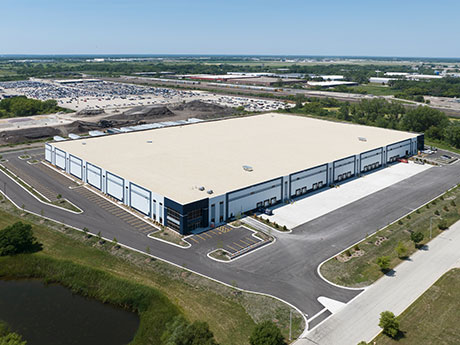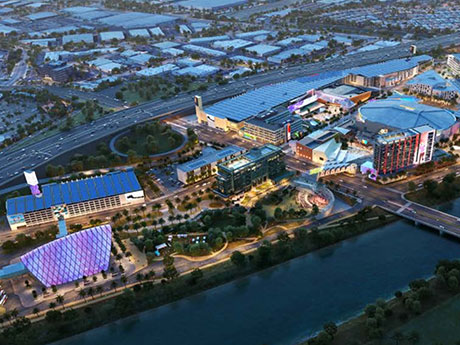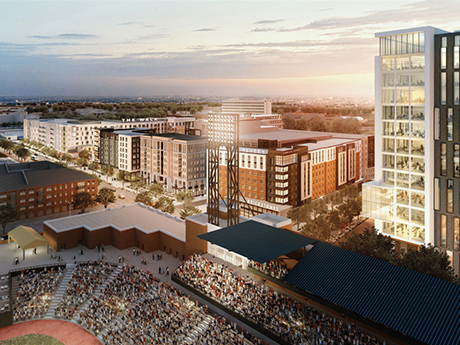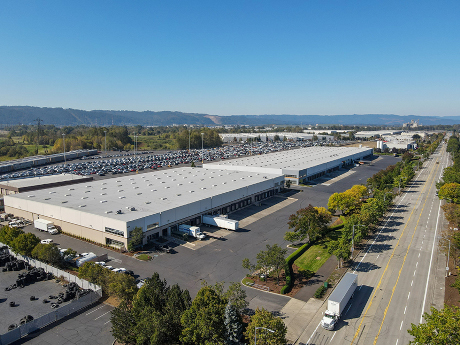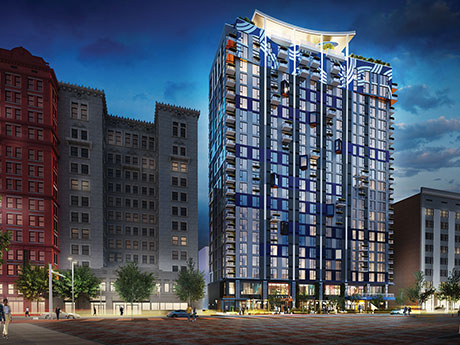— By Kenny Houser and Mike Hale, Principals, Capacity Commercial — The industrial real estate sector has experienced a noticeable deceleration with a decline in leasing and sales activities. This trend is particularly evident in Portland where commercial property sales transactions have been steadily decreasing. There was a quarter-over-quarter decline of almost 29 percent in the second quarter of 2023, resulting in a sales volume of $3.4 billion, the lowest recorded since late 2014. The Federal Reserve’s decision to pause its rate hike campaign in response to inflation concerns has impacted the market. With borrowing costs fluctuating, the disparity between buyer and seller expectations has created challenges in determining agreeable property valuations. Simultaneously, leasing activity has also slowed, indicating a return to normalcy in Portland’s industrial market. Total deal volume in the first quarter of this year reached about 1.7 million square feet, a 35 percent decrease compared to the average of 2.6 million square feet per quarter over the previous two years. Despite the slowdown in leasing, the limited amount of industrial space under construction in Portland is expected to maintain a balance between supply and demand. The current construction activity accounts for 1.1 percent of the total inventory, …
Market Reports
By Jared Shapiro, Marcus & Millichap The commercial retail market is a consistently evolving landscape that plays a vital role in shaping our economy. With consecutive months of broad growth, health and convenience remain a priority for shoppers. With the combination of more households planning seasonal trips and underlying tenant demand remaining extraordinarily strong, the commercial retail sector has become the “darling of the industry.” As seen in the June meeting, the Federal Reserve took a rate hike hiatus for the first time since March 2022, which should lead to some stabilizing of the capital markets. Is the retail investment market poised for a growth and boom cycle? In short, the answer is yes. Currently, there is a lack of for-sale inventory on the market for multi-tenant shopping centers, which is creating a scenario where we are consistently seeing multiple qualified offers on deals that we are seeing in the market. As we are getting deeper into the summer months, the flow of 1031 exchange money will continue to grow. This will be a positive element for the single-tenant net-lease sector, as it has historically seen the most aggressive buyers of triple-net deals in 1031 exchanges. When viewed from …
— By Christopher J. Destino, Principal, Lee & Associates — The geographic area along the border of Los Angeles and Orange County is locally known as the Mid Counties market. This region currently boasts about 130 million square feet of industrial real estate, thanks to its prime location. This is a location that’s only 25 miles from the ports of Long Beach and Los Angeles, and 20 miles from Los Angeles International Airport (LAX). Like many other parts of the U.S., Mid Counties has begun to see the effects of continued economic uncertainty and a rising interest rate environment. It faces challenges like land scarcity and limited newly constructed buildings to accommodate the growing demand. Thankfully, this area still typically delivers 200,000 to 500,000 square feet of new construction annually (2018 was abnormally high with about 2 million square feet added). One recent deal worth noting is the 94,000-square-foot, Class A industrial distribution building in Santa Fe Springs from Panattoni that leased to BeBella Cosmetics for $2.05 per square foot net per month with an option to purchase at $577 per square foot. Another new development example is the 146,617-square-foot building that Duke Realty developed and leased to Weee!, a …
It’s no secret: The multifamily real estate market in Memphis has experienced a significant decline in investment sales volume and total transactions over the past year. But with signs of life coming quickly on the horizon, how can you be ready to capitalize? According to CoStar Analytics, the 58.7 percent sales volume decline in Memphis is in line with the national average, but we have seen a larger dip in total transactions. The steep and rapid decline is directly correlated to the Federal Reserve’s ongoing battle of taming inflation. The Fed has increased the benchmark federal funds rate at 10 consecutive meetings. And while there was a pause at the June meeting, more rate hikes are expected this year. What does this mean for investors and operators? The cream will rise to the top. Some investors may default on loans due to floating-rate debt and the rapid rate increases, while others may struggle to refinance or sell without incurring losses as their cheaper rate caps expire. However, those that have executed their business plans effectively and added value to their apartment complexes by raising rents can expect some cushion. Another interesting factor to examine is the vacancy rate, which has …
— By Samuel Hatcher, Field Research Manager, CBRE — Portland’s historically vibrant office market finds itself at a crossroads, striving to regain its footing in the wake of economic headwinds. The city’s unique blend of natural beauty, progressive culture and thriving tech scene has been a magnet for young professionals seeking an exceptional quality of life. However, recent shifting market dynamics have cast a shadow of uncertainty, compelling stakeholders to navigate a path to recovery with adaptability and resilience. Portland’s overall office market vacancy is currently 22 percent across the metro area. Downtown vacancy — which includes the Central Eastside, Northwest Close-in and Lloyd District — is at about 28 percent. Of that vacant space, 3.3 million square feet is Class A. Moreover, sublease availability across the overall office market is up 67 percent year over year and investment remains paused. Capital is waiting on the sidelines due to elevated interest rates and generally tighter financial conditions. Despite these stats, the market is showing some bright spots. The rate at which newly available sublease space is being put on the market has slowed compared to when this narrative was dominating headlines. There’s even a chance of a slight quarter-over-quarter decrease …
By John Cassidy and Calvin Gunn, Lee & Associates If you love a good groundbreaking photo — full of shiny shovels, hard hats and smiling development teams — you may be disappointed this year, for all the best reasons. With Chicago’s most recent wave of speculative industrial projects currently being delivered, the market now actually has space to offer industrial tenants — a refreshing change from the past few years. With construction costs and interest rates continuing to rise and credit availability shrinking, many developers with ties to Chicago are pausing new projects as exit cap rates are becoming more difficult to predict. At the same time, market fundamentals are starting to cool from the pandemic-era eruption of demand. The good news: Chicago’s industrial market may be down from the clouds, but it’s still historically quite healthy. Vacancy rate in perspective According to Lee & Associates of Illinois’ second-quarter industrial snapshot, construction deliveries caused the Chicago industrial vacancy rate to tick upward for the second consecutive quarter. However, a 3.68 percent vacant market is still considered a historically low vacancy environment. As a comparison, that vacancy rate measured about 12 percent at the end of 2009 and 6.6 percent in …
— By Gleb Lvovich, Managing Director, and Daniel Tyner, Senior Director, JLL Capital Markets — The commercial real estate market across all asset classes has seen a slowdown in transaction activity in 2023 compared to 2022 and 2021 largely due to the rapid increase in borrowing costs for investors. This might have impacted the commercial real estate sector as a whole, but shopping centers in Orange County are still buzzing with consumers as occupancy remains robust. Orange County has continuously proved to be one of the most sought-after markets to invest in retail due to its strong demographics, population growth and overall fundamentals. Investor Demand Shopping center performance in Orange County has been excellent over the past few years, and investors see this trend continuing for the foreseeable future. Low vacancy and strong tenant demand has allowed investors to experience significant rent growth at their properties. Orange County has experienced particularly strong grocer performance and expansion. Historically, shopping center transactions have been very limited in Orange County. This has further driven investor demand due to the lack of available investment opportunities. The few listings that exist generate significant interest. Recent examples include the sale of Ralph’s- and Rite Aid-anchored Brea …
The term “grit” has become synonymous with Memphis. The commercial real estate landscape continues to receive headwinds from interest rates, high inflation, construction prices and geopolitical tensions, but Memphis continues to show grit in the face of these obstacles. Memphis presents a compelling opportunity for retailers seeking expansion. With a low vacancy rate of just 3.5 percent and strong occupancy levels, the city’s retail market is flourishing. The annual rent growth of 3.7 percent aligns with the national average, indicating a stable and promising environment for businesses. Moreover, Memphis offers competitive pricing for retail spaces, with affordable rates and attractive cap rates that surpass those of neighboring markets. This appealing pricing structure, coupled with a surge in transaction activity, has revitalized the market, providing increased liquidity and investment opportunities. The Regional Megasite of West Tennessee is witnessing a remarkable undertaking from Ford Motor Co. in its newly forged partnership with South Korean battery company SK Innovation. The ambitious Blue Oval City project is well underway. Currently valued at $5.6 billion and sprawling across 3,600 acres, the project is expected to generate nearly 6,000 job opportunities with another 30,000 ancillary jobs in the surrounding communities. Anticipated spillover effects from this venture …
— By Keegan Clay, Executive Director, Cushman & Wakefield — The Portland metro industrial market is well poised for investment and rent growth into 2024, despite an increase in sublease space coming to market. Portland has experienced many great trends, particularly in the past few years, including year-over-year double-digit rent growth, compressed cap rates, positive net absorption (occupancy growth), strong tenant demand, all-time low vacancy at 2.5 percent and land prices tripling in a short timespan. Such movement has led to increased competition and investment in the Portland region. We have seen an increase in sublease space hitting the market over the past five months to the tune of more than 2 million square feet. The majority of this relinquished space has stemmed from just a few users. Many of these subleases are a result of acquisitions with companies looking to increase efficiencies by eliminating redundancies. Some industrial users have consolidated out of market, including a major home goods business (648,000 square feet), while others have grown their real estate position in Portland. This includes a leading B2B electrical and industrial distribution company (293,000 square feet). Year to date, we have yet to see any of the larger …
By Jamie Dunford, CBRE Outside of office product, Cleveland and Northeast Ohio haven’t historically been of interest for most out-of-town multifamily developers and investors. They viewed the region as a tertiary or secondary market with a declining population and a lackluster economy. Until recently, urban living in the central business district (CBD) and surrounding neighborhoods was rare — Cleveland was a commuter city with a strong office market from the 90s until the Great Financial Crisis (GFC) in 2008. At one point in time, Northeast Ohio boasted one of the highest concentrations of Fortune 500 companies with headquarters or other office space in the region, and the CBD had the largest job hub in the state of Ohio. Most office buildings in the CBD were owned by institutional capital or national developers. However, the GFC vastly altered this landscape as unemployment rose, companies left or downsized, and many office assets went back to the lender. This left an oversupply of office product in the market, and the older buildings suffered the most. However, this created a market opportunity that Cleveland developers seized, and the city eventually became a national leader in converting historic office assets to multifamily while taking advantage …



